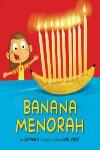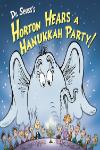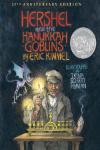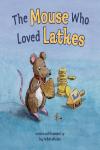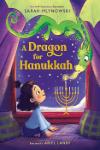Review Chopra: Ask the Kabala Oracle Cards (2006)
 As traditional Judaism is against divination I was hesitant to read the 133 page book(let) accompanying the deck of cars in the box labeled “Ask the Kabala Oracle Cards.” The cards themselves are nicely designed. The front has one of the 22 Hebrew letters, along with English transliteration on how to pronounce them. Each has an image, often nonfigurative or with simple symbols, never more than with 8-9 colors, which give the whole seta simplistic feeling. The back of all the cards has the same drawing: a tree with a bird at its center surround by a reddish, wavy edge.
As traditional Judaism is against divination I was hesitant to read the 133 page book(let) accompanying the deck of cars in the box labeled “Ask the Kabala Oracle Cards.” The cards themselves are nicely designed. The front has one of the 22 Hebrew letters, along with English transliteration on how to pronounce them. Each has an image, often nonfigurative or with simple symbols, never more than with 8-9 colors, which give the whole seta simplistic feeling. The back of all the cards has the same drawing: a tree with a bird at its center surround by a reddish, wavy edge.
The last page of the booklet gives information about the three authors, but doesn’t indicate who drew the cards. I think that’s a shame because it made it look like that half of the package’s content was disregarded, while some people might spend much more time with the visually pleasing cards than with the text. My guess is that the design was created either Charles McStravick, who is listed as responsible for “design” on the inside page of the book, or maybe Tracy Walker, who made the “interior illustrations”.
The headliner of the three authors is Deepak Chopra. He is much better known than the other two authors, so I suspect that’s why we have his name on top and bigger letters. I wonder thought how much of the book he has written and to what extent he just gave his name to the project. The only piece identified as written by him was the 11 page long introduction, mind you this is a small format book, so 11 pages aren’t that long. The second author mentioned on the cover is Michael “Zappy” Zapolin, the person behind the kabala.com website and a “lecturer to celebrities.” I never heard of him, but maybe his association of celebrities was a good enough selling point to include him. Finally, listed as “with,” we have Alys R. Yablon, an editor and ghostwriter according to her website. She might have done the majority of the writing.
Chopra’s introduction starts of with a comparison of his own, Vedic tradition and Kabbalah. After finding similarities he briefly characterizes the domains of the physical/mental/spiritual world, then he goes off to dive into the third that he calls the Theosphere’s domains: personal/collective/universal. That’s were he connects to the Kabablistic concepts of Atzilut/Beriya/Teyzira/Assiya and the sephirot again. He attempts to tie it a together with suggesting that you can ask Kabala a question and get an answer with the help of the cards, but you need to do the interpretation itself. He makes references to lots of people, concepts and theories in the attempt to show that they are all connected and how knowledgeable he is. He might, be but for me this section felt like a mixing good pieces of content with each other in lieu of putting attention and original thought to it.
Next there are two pages on how to use the booklet: shuffle the cards, focus on question/problem, pick one, meditate on the letter, read the story, listen to your intuition and find the answer. Then the impossible task of introducing the history of Kabala on 6 pages with a heavy focus on the Zohar is accomplished. Before we get into the stories themselves we get a surprisingly good and comprehensive ten page treatise on the mysteries of the aleph-bet.
The majority of the booklet is made up by the text corresponding to the 22 letters and the 22 cards. Each has 4-5 pages to itself, including a smaller, black and white replica of the appropriate card, a quote from the Torah (with citation) and an explanation of the quote and the story behind it along with a focus on a human issue, question, problem or moral dilemma. These chapters have nothing objectionable in them, they often follow traditional rabbinic discourse no a topic, always ending with a lesson we can all relate to and learn. But then each chapter ends with a clearly separated paragraph or two, that connects the letter to the lesson or feature, which doesn’t always connect to traditional interpretation. E.g.
Aleph – begin again
Bet – conflict
Gimmel –judgment
Dalet – paradox in relationship
Heh – transition
Vav – accept responsibility
Zayin – stillness
Chet – let go
Tet – appreciation
Yud – forgiveness
and so on
Depending on your stance, persuasion and interest, you may want to look at or not, use or not the pretty cards. Similarly you can read the whole booklet if you wish or just focus on the 22 Torah stories as that could be kosher for almost anybody.

